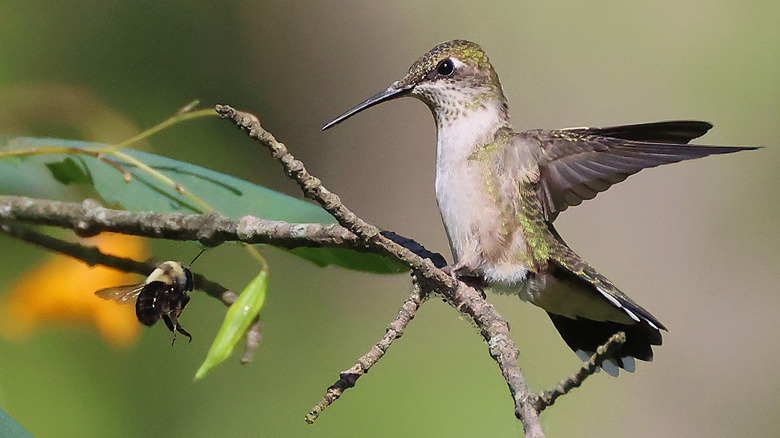Grow This Unique Bat-Faced Flower To Attract Beautiful Hummingbirds To Your Yard All Summer Long
There's something beautiful about the moment a hummingbird visits your garden, and you hear the quick flutter of their wings. There are numerous flowers that can attract both hummingbirds and butterflies to your garden, like trumpet vine and honeysuckle. However, Cuphea llavea, more commonly known as bat-faced Cuphea, might just be the unique hummingbird-attracting flower that your garden is missing.
Cuphea originates from Mexico, and one of the most unique qualities of bat-faced Cuphea lies in the shape of its flowers. As noted by the name, the flowers resemble the head of a bat. The purple calyx makes up the face, while the gorgeous red petals that extend outward from each end look like ears. The tubular shape of Cuphea is perfect for hummingbirds' long, needle-like beaks, and it makes it easier for them to harvest the nectar. The good news is that bat-faced cuphea is relatively easy to grow under the right conditions. To fully enjoy the peculiar shape of the cuphea flower heads, make sure to plant them in an area that's easy to access.
Growing and caring for your cuphea plants
Cuphea grows well in USDA hardiness zones 9-12 and, unlike the animals they're named after, bat-faced cuphea shrubs enjoy six or more hours of full sun. In hotter climates, some occasional shade is welcomed. These plants work well as outdoor annuals or even as houseplants — as long as they have access to the appropriate amount of sunlight. Bat-faced cuphea can reach 2 to 3 feet in height or 12 to 18 inches when planted as annuals.
Cuphea can be propagated from seed, cut stems, or divided plants. To propagate plants like a pro, take your stem clippings and plant them in a new pot or the ground. To grow from seed, start the plant indoors about 10 to 12 weeks before the last frost. The Old Farmer's Almanac can give you time ranges based on your zip code. Since the seeds need light to germinate, plant them with little to no soil cover. You can also grow the seeds outdoors after the last frost. In either case, the key to growth is sunlight and moist, well-draining soil. Japanese beetles, aphids, and whiteflies are common pests, so make sure to learn some tips and tricks to prevent pests from destroying your cuphea plant.

